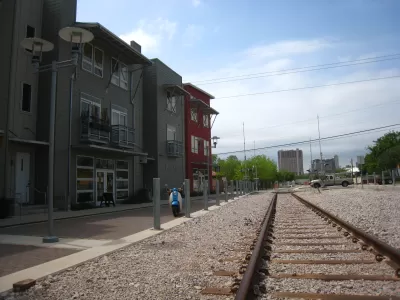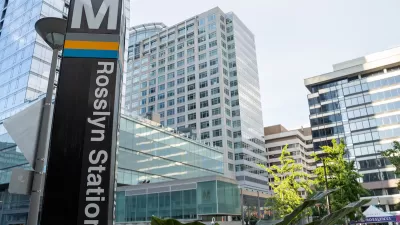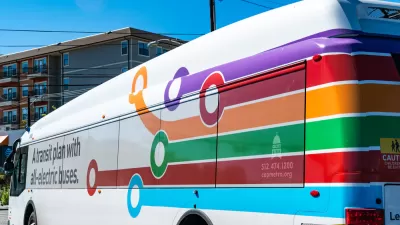New research about the importance of transit in building transit oriented communities has some surprising results that may have significant implications for how we plan and build in the future.

Writing in The Urban Edge, Andrew Keats reports on new research from UC-Berkeley professor Daniel Chatman that looks at what makes a successful transit oriented development. Surprisingly, he finds that proximity to transit (specifically light rail stations) has little impact on the success of TOD projects.
The study focused on people living within 0.4 miles of transit and in homes less than 7 years old, "essentially a proxy for those who live in 'transit-oriented development'." What it found was that those people owned fewer cars and were less likely to drive to work. However, the placement of a transit station nearby wasn’t the most influential factor in creating successful TOD development.
Rather, the most important factors were the scarcity of parking and the number of bus stations in the vicinity. Neighborhoods with little parking and lots of bus service cut car ownership by 44 percent.
“When all of these other factors were considered (bus access, parking availability, job and population density, and housing type), rail access had no effect on auto ownership,” Chatman wrote.
…
What really mattered was scarce parking, ample bus service, smaller apartments, more rental apartments, more stuff within walking distance, and being close to downtown jobs.
Chatman writes that cities without those, expensive light rail stations can still have the successful type of neighborhoods that transit oriented development has promised, but changes to policy need to take place. Among Chatman's suggestions, reducing parking requirements for new projects and encouraging density, while planning for amenities such as grocery stores, can achieve many of the goals espoused by TOD advocates.
FULL STORY: Why Transit Oriented Development Doesn’t Need Transit

Planetizen Federal Action Tracker
A weekly monitor of how Trump’s orders and actions are impacting planners and planning in America.

San Francisco's School District Spent $105M To Build Affordable Housing for Teachers — And That's Just the Beginning
SFUSD joins a growing list of school districts using their land holdings to address housing affordability challenges faced by their own employees.

The Tiny, Adorable $7,000 Car Turning Japan Onto EVs
The single seat Mibot charges from a regular plug as quickly as an iPad, and is about half the price of an average EV.

Seattle's Plan for Adopting Driverless Cars
Equity, safety, accessibility and affordability are front of mind as the city prepares for robotaxis and other autonomous vehicles.

As Trump Phases Out FEMA, Is It Time to Flee the Floodplains?
With less federal funding available for disaster relief efforts, the need to relocate at-risk communities is more urgent than ever.

With Protected Lanes, 460% More People Commute by Bike
For those needing more ammo, more data proving what we already knew is here.
Urban Design for Planners 1: Software Tools
This six-course series explores essential urban design concepts using open source software and equips planners with the tools they need to participate fully in the urban design process.
Planning for Universal Design
Learn the tools for implementing Universal Design in planning regulations.
Smith Gee Studio
City of Charlotte
City of Camden Redevelopment Agency
City of Astoria
Transportation Research & Education Center (TREC) at Portland State University
US High Speed Rail Association
City of Camden Redevelopment Agency
Municipality of Princeton (NJ)




























